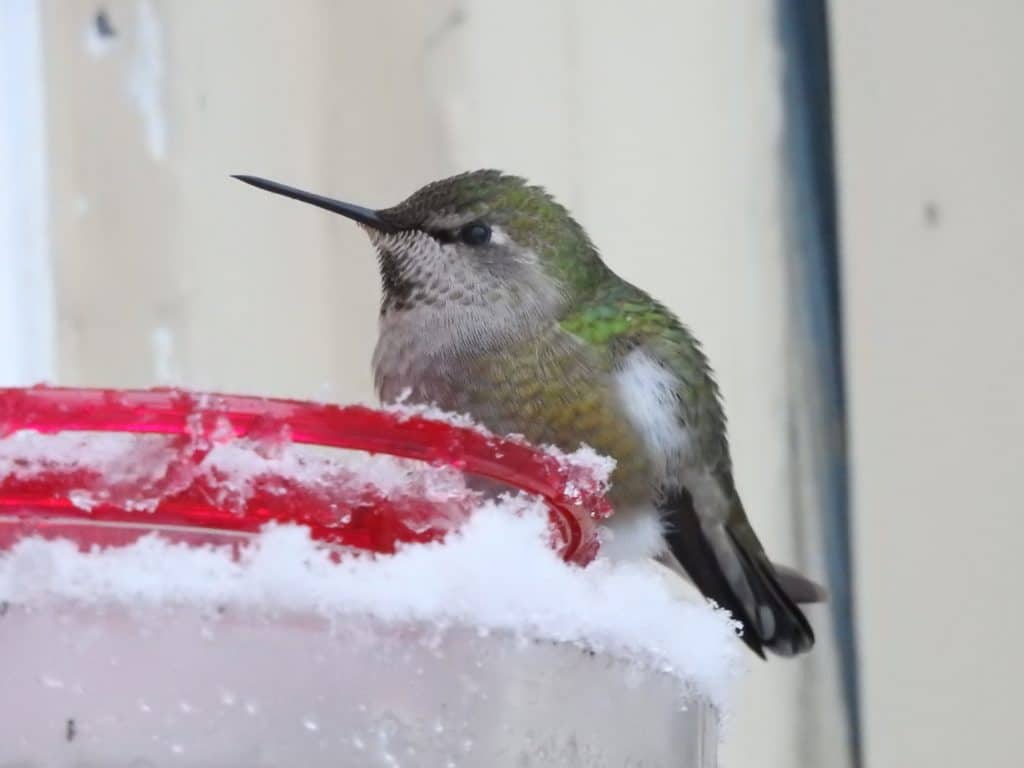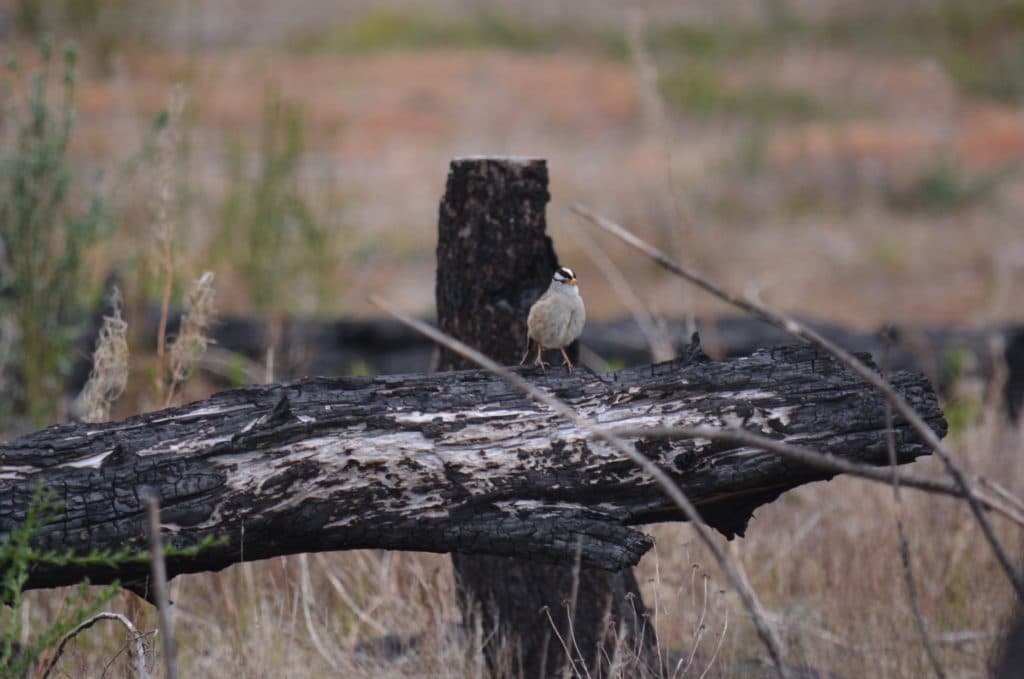10 Washington Birds to See Near Your Home
Signs of spring are popping up all across Washington. My home in Olympia has been surrounded by birdsong every morning as our avian neighbors get ready for the breeding season! To start my days, I like to sit in front of my living room window with a nice cup of coffee and watch Washington birds flit around outside. Birds are all around us and you truly don’t need anything fancy to get into bird watching; just a touch of interest and a dash of patience!
[toc]
I feel confident in saying that you probably encounter most of the birds on this list in your day-to-day life, and to prove that point, most of the photos on this list were taken at bird feeders or in/around my own yard! If you feel like it, take a little time (and it can really be a little) and see if you can start to get to know your birdy neighbors. Try to find one bird per day or use this list as a kind of scavenger hunt to get you out and about! Tag us in your finds on Instagram, @karlavolyn and @explorewashstate!
Anna’s hummingbird (Calypte anna)
Small, fierce and undeniably charming; it’s no wonder these birds are so beloved, even among the most experienced birders. They’ll readily show up to feeders and make themselves at home in your own backyard.
What to look for:
Small green hummingbird that buzzes around like a bee. Males sport flashy feathers on the head and throat that shine bright jewel-toned pinks, reds and purples in the light. Females (pictured) and immature males might have some of these bright feathers but will generally be green all over with a grayish-white belly. Beware though: when the hummingbird isn’t in direct light the throat or head might appear black; this is just a trick of the light and the way the feathers are structured (we can talk more about structural colors another time).


Northern flicker (Colaptes auratus)
Large, brown woodpeckers that can be found on the ground almost as often as pecking their way up a tree trunk. These are common backyard birds, but a bird that never seems to become less exciting — be it the first time you’re seeing them or the thousandth.
What to look for:
Large brown bird with black spots and a characteristically long woodpecker bill. Notice a patch of white feathers on the rump as this bird flies away. Our local (Western U.S.) flickers are of the “red-shafted” variety, meaning they have a reddish-orange wash to the undersides of their flight feathers. This is really noticeable when they fly and you can see their broad wings spread out. Males (pictured) will have a bright red “mustache” while females will have a red nape (back of the head/neck). You’ve probably heard these birds’ loud high-pitched calling throughout your neighborhood before.
Steller’s jay (Cyanocitta stelleri)
These birds are loud, large and in charge! You’ve probably heard these cacophonous jays and maybe you’ve even felt a little annoyed by them — I know I have!
These birds often get called “blue jays” which isn’t necessarily wrong because they are blue and they are jays, but they are not to be confused with their eastern cousins, the blue jays (C. cristata).
What to look for:
A relatively large bird with shades of blue and fairly large bills, although not woodpecker-large. Steller’s jays are darker birds with black and dark blues, which appear when light hits the feathers in a certain way (that structural color again). Steller’s jays are widespread, although they do have a tendency to hang out in more wooded areas.


American robin (Turdus migratorius)
Arguably one of the most recognizable birds in North America; the American robin is so commonplace it is often overlooked; taken for granted even. Consider this a gentle reminder to spend a little extra time appreciating robins next time you see them. Watch them pull worms out of the ground, admire their remarkable commonness and then feel free to move on with your day.
What to look for:
I believe in you, dear reader. I know you know what a robin looks like. If you feel especially confident, however, I implore you to take a few extra minutes during the early morning hours when you probably feel like cursing the robins’ very existence for waking you up, to listen to their songs. Robins have surprisingly complicated songs built up of “phrases” that are ordered and repeated in a pattern that is specific to their geographic location. A dialect of robin language that we humans are lucky enough to take for granted and even occasionally resent.
Black-capped chickadee (Poecile atricapillus)
These plump little birds are as adorable as they are tough. Black-capped chickadees can be found throughout much of North America. The more you watch chickadees and learn about their lives, the cuter they become. That’s a promise.
What to look for:
Stocky little birds often found flitting around in tree branches. As their name suggests, black-capped chickadees have black caps with a grayish back and reddish-orange on their flanks and a creamy-colored belly. Listen for the black-capped chickadee’s characteristic “chicka-dee-dee-dee” and “cheese-bur-ger” or “hey sweetie” calls.


Red-breasted nuthatch (Sitta canadensis)
A funny name for a cute bird, what more could you ask for? These stocky little birds can be found hopping their way down tree trunks, using their long, pointy bills to probe around in the bark for insects.
What to look for:
Red-breasted nuthatches are plump with a short tail and a relatively long bill. They’re a grayish-blue color on the back with a light reddish wash on their breast and a white throat. They have black “eyebrow” stripes and a characteristic feeding habit of working their way down tree trunks rather than up. Their calls sound a little cranky, like maybe they haven’t had their coffee just yet.
Dark-eyed Junco (Junco hyemalis)
One of the most abundant birds on this list; you’ve almost certainly crossed paths with a dark-eyed junco and you’ve probably even seen one today! These birds are spread throughout North America and look different depending on the region they’re in. Here in Washington, we have the “Oregon” type.

What to look for:
Relatively large, chunky sparrow with a black “hood”, brown back, pinkish-tan sides and a lightly off-white belly. They have a relatively short and triangle-shaped pink bill and strikingly white outer tail feathers that “flash” when they fly. These birds are most comfortable on the ground where you can watch them hop and scrape as they search for snacks. Dark-eyed juncos notoriously build their nests in some wacky places and people are often surprised to find their nests built right into the ground!

White-crowned Sparrow (Zonotrichia leucophrys)
Conveniently named and a song that is easily remembered. White-crowned sparrows are common in urban parks, parking lots, open woodlands, prairies, next to the water and wherever else the wind takes them.
What to look for:
As the name would suggest, white-crowned sparrows sport a distinctive white crown bordered by two bold black lines. Their bodies are gray and they have a yellow, triangle-shaped bill. White-crowned sparrows are on the larger end of the sparrow spectrum and will hang out mostly on the ground. I don’t have a good mnemonic for their song but once you hear them, you’ll start to find it everywhere!
House Finch (Haemorhous mexicanus)
House finches (not to be confused with the introduced house sparrows) are aptly named as they do not seem to shy away from human-dominated spaces. These finches are chatty, striking and charismatic and will happily camp out at a full feeder.
What to look for:
House finches are relatively large with a fairly large, conical bill. The females are lightly colored gray-brown with darker streaking all over. The males can be strikingly colored red — a color which is actually derived from compounds in the birds’ diets. The coloring will be evident on the head, down to the breast and then usually a bit on the rump as well. While most house finches have red coloring, a yellow or orange-tinted bird is not totally uncommon!


Pine Siskin (Spinus pinus)
These gregarious finches are small birds but mighty! You’re likely to hear large flocks of pine siskins from a mile away and they’ll fight each other and any other bird who dares approach the feeder they’ve chosen. These birds are irruptive, meaning they’ll experience population booms and busts from year to year depending on food availability. When their populations boom it’ll seem like they’re on a mission for world domination!
What to look for:
Small, light grayish-brown birds with a yellowish wash over their feathers and heavily streaked. They have needle-point, conical bills and relatively small heads. Pine siskins will likely travel in groups and are known to take over bird feeders en masse. They’re incredibly chatty and have a characteristic up-slurred buzzing sound that can become very hard to ignore when you have 50 of them outside of your window!
Photos: Anna’s hummingbird by Timothy Leque. Black-capped chickadee and Pine Siskin by Daniel Horton. Additional photos by the author.








Thank you for this article. Now I know my favorite bird is named Black-capped chickadee.